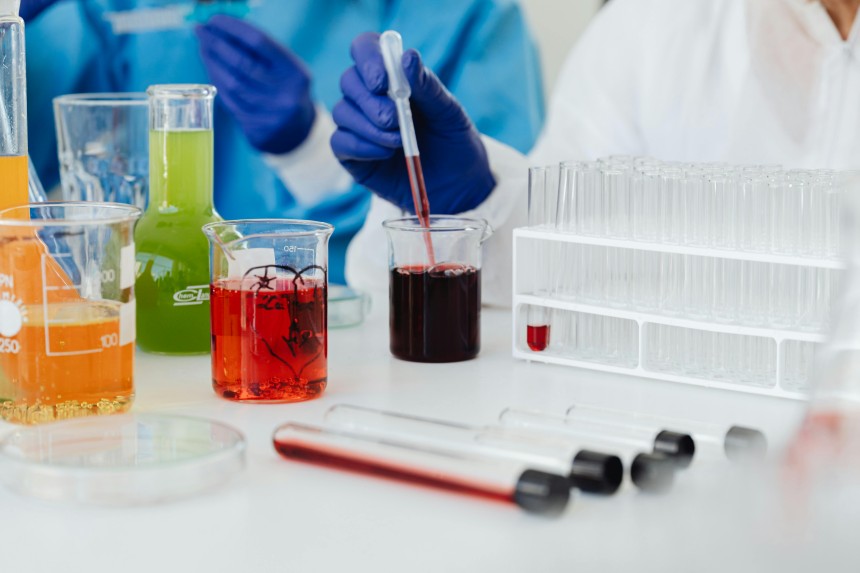Common Chemistry Lab Errors and How to Avoid Them
Avoid common chemistry lab mistakes! From measurement mishaps to safety slips, learn how to ace your experiments easily.
Common Chemistry Lab Errors and How to Avoid Them

Chemistry labs can be a rollercoaster. One moment you’re mixing solutions like a pro, and the next, you’ve got an unexpected color change, a fizzing reaction, or worse… glassware that didn’t survive the experiment.
If you’ve ever thought, “I wish someone could just do my chemistry assignment for me,” trust me, you’re not alone. Labs can be tricky, but most errors come down to simple, avoidable mistakes. But, as you have come here, we won’t let you go empty-handed. So, let’s talk about some of the most common chemistry lab blunders and, more importantly, how you can dodge them like a lab ninja.
The Problem:
Ever poured out what looks like 10 mL of liquid into a beaker, only to realize later it was more like 12 mL? Yeah, those tiny differences can completely throw off your experiment. Precision matters in chemistry.
How to Avoid It:
- Use the right measuring tool—graduated cylinders, burettes, and pipettes exist for a reason.
- Check measurements at eye level (not from above or below).
- If you need an exact amount, use a dropper instead of free-pouring.
Seriously, if you ever find yourself thinking, “Ugh, why won’t this experiment work?!”—double-check your measurements.
The Problem:
You’re in the zone, moving quickly, and suddenly, you grab the wrong bottle. Maybe you just mixed hydrochloric acid instead of sulfuric acid. Best-case scenario? Your reaction doesn’t work. Worst case? You’ve just created something dangerous.
How to Avoid It:
- Slow down double-check every label before using a chemical.
- Keep similar-looking bottles apart so you don’t reach for the wrong one.
- Label everything clearly if you’re preparing solutions beforehand.
- And for the love of safety, always add acid to water—never the other way around! (Unless you enjoy unexpected explosions.)
3. Dirty Equipment = Messed Up ResultsThe Problem:
Imagine making tea in a cup that still has leftover soda in it. Gross, right? That’s exactly what happens when you use dirty lab equipment—residue from previous experiments can totally mess up your results.
How to Avoid It:
- Wash everything before and after use. Even if it looks clean, rinse it again.
- Use distilled water to remove any leftover chemicals.
- Don’t mix utensils. If you used a dropper for one solution, don’t use it for another without cleaning it first.
Trust me, you don’t want your experiment failing just because your beaker had invisible leftovers from yesterday’s lab.
The Problem:
Labs have expensive equipment, and one wrong move can break something. Holding a test tube wrong? Spill. Dropping a pipette? Crack. Heating glass too quickly? Boom.
How to Avoid It:
- Handle test tubes at an angle when heating—this prevents nasty splashes.
- Use tongs or gloves when dealing with hot glassware (yes, it looks cool to handle with bare hands, but let’s not be reckless).
- Don’t force anything. If a stopper won’t fit, pushing harder isn’t the solution.
Basically, don’t treat lab equipment like your everyday kitchenware—respect the glassware, and it’ll respect you back.
The Problem:
You finish your experiment, and your data sheet is blank. What were the temperature readings? When exactly did the color change? Who knows! Now you’ve got to guess, which is not exactly the best scientific method.
How to Avoid It:
- Write everything down as you go—don’t rely on memory.
- Be specific with your notes: Record times, colors, temperatures, smells (yes, if it’s safe to sniff).
- Keep a neat lab notebook so your future self doesn’t have to decipher cryptic scribbles.
Taking solid notes can save you from a world of pain when you’re writing your lab report later.
The Problem:
You think, “Do I really need goggles?” Next thing you know, you’ve got an unexpected splash heading toward your face. Safety rules exist for a reason, and skipping them is a risky move.
How to Avoid It:
- Goggles on, always. No exceptions.
- Know your emergency stations. Fire extinguisher? Eyewash station? Learn their locations before you need them.
- Never taste, touch, or directly sniff chemicals. If you need to smell something, use the “wafting” method.
- Wear appropriate clothing. (No open-toe shoes unless you want a beaker full of acid on your foot.)
Safety first, people!
The Problem:
Labs have time limits, but if you rush, you’ll probably make mistakes. Maybe you skip a step, mix the wrong things, or forget to record data.
How to Avoid It:
- Read the procedure beforehand so you know what’s coming next.
- Work methodically, not fast. Precision beats speed every time.
- If you feel lost, pause. Ask your instructor instead of guessing.
Chemistry is all about patience—give yourself time to get it right.
The Problem:
Nothing’s worse than being halfway through an experiment and realizing you have no idea what’s going on. If you don’t understand the why, the how won’t make sense either.
How to Avoid It:
- Read the lab manual before class. Don’t just skim it—actually understand it.
- Watch demo videos if available. Seeing something done can make it clearer.
- Ask questions! If something doesn’t make sense, now’s the time to clarify.
The more prepared you are, the smoother your lab experience will be.
Look, no one’s perfect. You will make mistakes in the lab—it’s part of learning. But the key is knowing which mistakes are common so you can avoid them.
And hey, if you ever feel like, “Ugh, I just want someone to do my chemistry homework for me,” don’t stress too much. Take a breath, review your notes, and remember—chemistry is just a series of well-planned steps. Stick to the basics, stay safe, and you’ll get the hang of it. Also, do not forget to take notes of this blog or save it so you do not forget any important instructions.
Now go rock that next lab session!


Supply Chain Strategy Consulting: How Experts Drive Business Success
Efficient supply chains are the backbone of modern businesses, ensuring that products reac...
